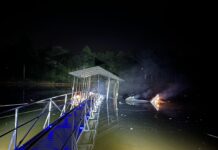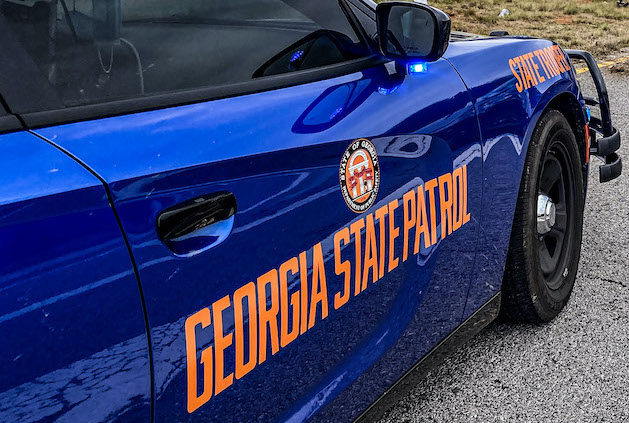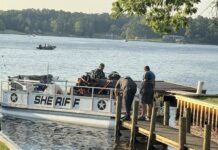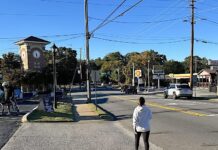Stop, drop, and roll. It’s a phrase that’s been repeated countless times over four decades in our nation’s schools. The fire safety tactic is taught as part of the national “Learn Not to Burn” campaign. Senior citizens who learned it in grade school can still easily recall the three steps to follow to minimize injury if their clothes catch on fire.
It’s that type of lasting lesson local firefighters hope to instill in a new generation of children. This year, they’re overcoming challenges from COVID to do it.
COVID and creativity
“We’ve had to be more creative this year and figure out how to do this distance-based learning,” explains Captain Josh Taylor. Taylor is a Fire and Life Safety Educator with White County Fire Services. He and his colleagues put together a video for their local school system to show during National Fire Prevention Week (NFPW).
In the seven-minute-long video, Capt. Taylor and fellow Life Safety Educator Casey Creel step students through a series of scenarios. They teach students the importance of checking smoke alarm batteries, kitchen safety and teach them to close their bedroom doors at night – “Close Before You Doze.”
The video also shows children how to escape from a burning building safely.
“Check the door for heat. Don’t use your feet. Use your hands and knees. Get low and go.” Creel’s narration reinforces the video of a young boy carefully opening his bedroom door and crawling across the floor outside to safety.
There’s a lot of knowledge in such short, rhythmic sentences and simple scenes, knowledge that might one day save a life.
“Even though we’re physically absent from the schools this year, we’re not absent,” says Capt. Taylor. “We’re doing everything we can to get out there and spread fire safety.”
Elementary school students watched the fire safety video in class. While he misses interacting with the students, Creel focuses on the positive: “At least we’re getting to reach them by video.”
“I hope they can still use all of the ideas that we put in the video and all of the education and be able to understand it and utilize it in their life,” he says.
Fighting fires before they start
It’s always better to fight fires before they start. That’s what these safety educators do each time they teach a lesson.
“Kids pass this information on to their families. We encourage them to badger mom and dad to make sure they have fresh batteries in smoke detectors and have a plan in place to go in case of fire,” says White County Fire Chief Seth Weaver.
Within the past decade, White County Fire Services has moved from a volunteer to a paid staff. That has opened up even more opportunities to focus on safety education.
“It’s important to me because, statistically, fire safety and fire prevention education has worked,” says Chief Weaver. He points to a reduced number of house fires with injuries and deaths in White County as indirect evidence that people are getting the message. Firefighters in this Northeast Georgia community now spend approximately 20% of their time putting out fires; the rest of the time, they’re busy responding to accidents, rescues, and recovery operations.
“You can look back at our call history through the years and see that, since this program went into play, the fire calls have gone down,” says Weaver. He acknowledges that some of that decrease may also be due to stronger building codes and construction, but adds, “I believe a big part of that is fire safety in the school systems.”
Second nature
Keeping fire safety education going even in the age of COVID is crucial: Repetition is key to instilling good fire safety habits in people.
“I don’t care if it’s a child learner or an adult learner,” says Lanier Swafford, “if you hear something so many times, you remember it. If you write it, you remember it. If you see, you remember.”
Swafford, who also serves as a White County firefighter and safety educator, says he and his fellow officers strive to make the most of every opportunity they’re given to teach children about fire prevention and safety. “We only have a few opportunities and hope to be impactful enough that they remember at least a portion of what we teach them so that they carry it home with them.”
“Repeat, repeat, repeat. You want it to be second nature.”
Second nature responses can make the difference between good and bad outcomes. Instinctively remembering NOT to throw water on a grease fire can help keep the fire from spreading. Remembering TO stop, drop, and roll can save your life.
A lot of this information is available online, but Swafford stresses, good information is key. Some sites try to sell you products. Their information may not be as reliable as that which is provided by non-commercially driven agencies and associations.
“If you’re going to use the internet for fire safety, make sure it’s a credible site,” cautions Swafford. He says the National Fire Protection Association, Georgia Forestry Commission, and Fire Adaptive Communities are good online sources for reliable fire safety information.






